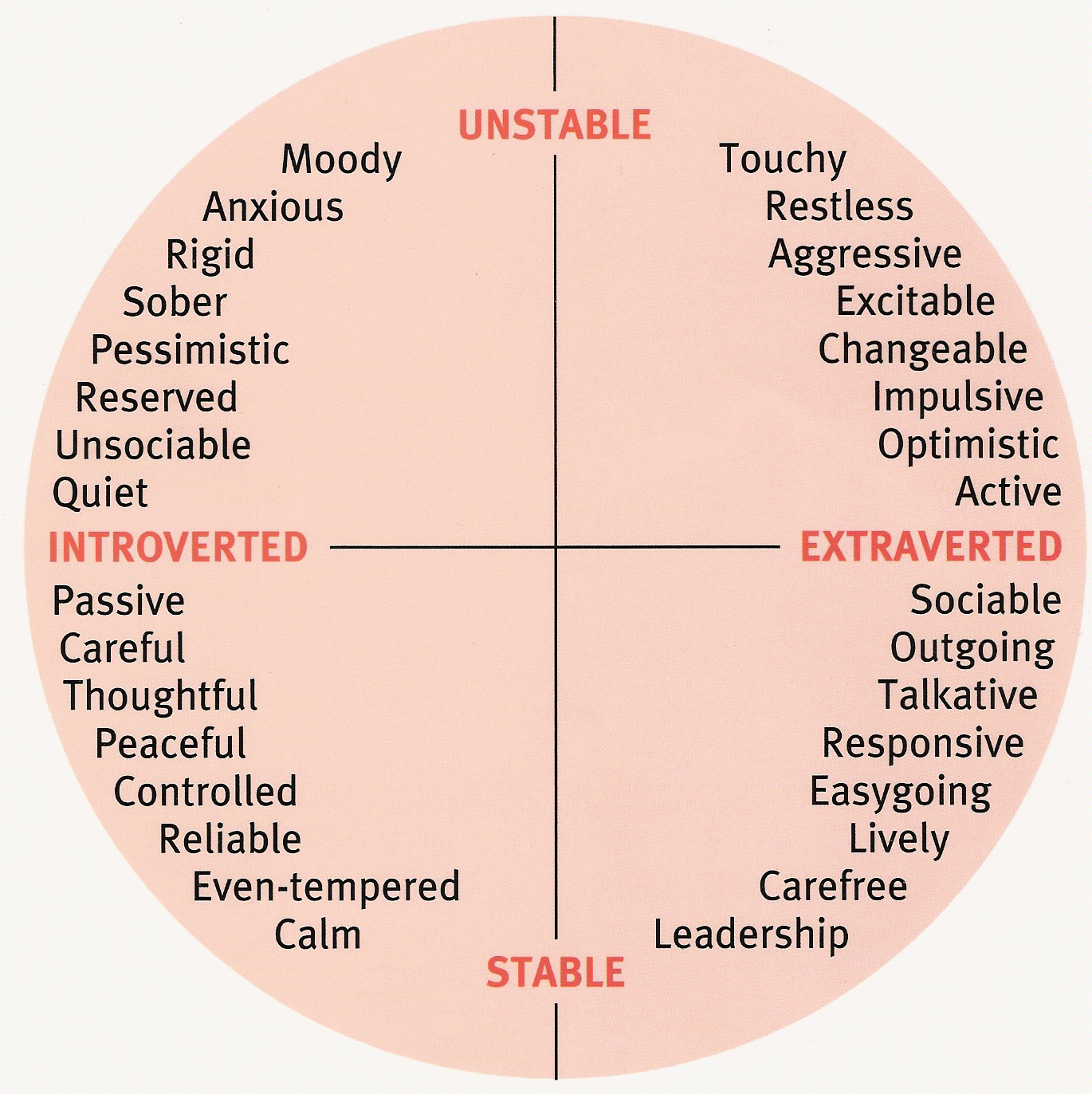Eysenck's circle: description, instruction for use and interpretation. Part I
The personal questionnaire of G. Eysenck is a collection of several author's questionnaires, originally directed, according to the author's application, to verify the identity, although, as it later turned out, the test decision determines its temperamental characteristics.

History of the questionnaire
The first test test was proposed by Eysenck back in 1947. He had the name in honor of the clinic, where at that time the author worked, and had the abbreviation MMQ in English. The questionnaire consisted of 40 statements that the subject should agree to by "yes" or disagree, responding, respectively, to "no".
All items were borrowed from existing test tasks, and the author selected them in accordance with clinical studies of neurotic diseases. Also, studies were carried out. Consonants to participate in the experiment (2000 people) were divided into two groups - one were neurotic, others - healthy. A scrupulous analysis of the subjects' answers, taking into account their diagnoses, revealed two types of neurotic disorders, hysterical and dysthymic.

Subsequently, Eysenck advanced the theory that the answers to these statements will give grounds for judging also other parameters of the personality, such as extraversion and introversion. He began work on a new kind of questionnaire, and MMQ faded into the background, never finding use in psychologists.
The second questionnaire, called MPI, was published in 1956. He represented two scales-introversion-extraversion and neuroticism-within the circle. Points were determined according to the answers: yes, no, I do not know. The application of the questionnaire showed a significant discrepancy between the practical results and the theoretical expectations of G. Eysenck.
The third personal questionnaire of G. Eysenck - EPI - saw the world in 1963. This time the test consisted of 57 questions, 24 of which determined the inclination to introvert or extraversion, the remaining 24 - to emotional stability. 9 statements are made in order to determine the sincerity of the respondent.
There are two versions of this questionnaire - A and B, which differ only in the sequence of the text. Everything else remains unchanged.

Theoretical basis
G. Eysenck carefully studied the materials of the examinations of seven hundred soldiers suffering from neurotic disorders, and concluded that the traits determining the character of a person can be identified with the help of two factors: extraversion (or introversion) and neuroticism.
Eysenck's circle is built on axes. The first defining criterion is bipolar and completely depends on the psychological components of a person. The extreme points of the axes show the orientation of the individual to the world around him, which is a sign of extraversion, or internal experiences, which is characteristic of introverts.
It is believed that sociability, openness, cheerfulness and lightness are the main features of extroverts. Introverts are characterized by closeness, alienation, concentration on their affairs, calmness.
Factor number two, which is the circle of Eysenck - neuroticism, he is neuroticism, shows a person in terms of his emotional stability, anxiety, self-esteem. This scale has two ends, one of which means a mature and morally stable person, while the second, on the contrary, has an extreme degree of neuroticism, moral instability, inability to adapt. The absolute majority of people occupy the middle position.